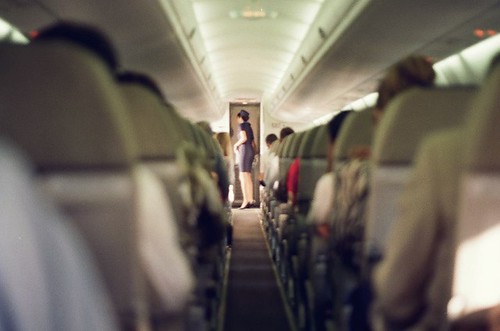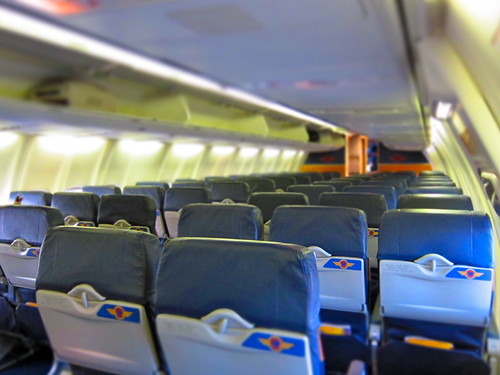Long-haul flights are the quickest and often the most convenient way of reaching far-flung corners of the world. Over the years the cost of flying has fallen so today it’s a far more realistic option—and sometimes the only option—for travelers to get away from it all, visit friends, and conduct business. However, spending such a long time on a plane can have its disadvantages.

[By Kevin_Morris on Flickr.]
Dehydration
The air on a plane is very drying because of the low humidity. Our every day humidity levels are usually around 30 to 60 per cent, but on a plane it’s much more similar to that of a dry summer climate, so we’re more susceptible to getting dehydrated if we’re not careful. It’s important that we’re conscious of this and take precautions to ensure we stay hydrated during a long-haul flight.
Dehydration can cause a number of issues while flying—dry skin and itchy eyes are just a few of the minor conditions, while more serious conditions (such as respiratory problems, like asthma) can be made worse by dehydration.
You can keep your body and skin hydrated by drinking plenty of water before you even board the flight. It’s advisable to limit your caffeine and alcohol intake as these can make you more dehydrated. Packing a good travel-sized moisturizer and applying it at regular intervals will help to keep your skin moisturized, and we recommend always carrying eye drops while flying if you’re prone to dry eyes. If you’re asthmatic, make sure you have your inhaler with you on the plane.

[Tomatoes by kevin dooley on Flickr.]
Deep Vein Thrombosis
Keeping hydrated on a long-haul flight is also important for preventing more serious conditions such as Deep Vein Thrombosis (DVT). Along with being dehydrated, sitting for long periods of time without getting up and moving around can increase your risk of getting DVT, which is when a blood clot forms in a leg vein, causing swelling and redness. It can become potentially life threatening if that clot moved through your blood vessels and reaches the lung. The risk of DVT is low, but on flights longer than four hours you should get up regularly and walk around, and while seated, you can do calf exercises by pressing down the balls of your feet and lifting them up to improve circulation.
Tasteless food
Tasteless food seems to be a universal issue on flights, and you may not have too much control over it. There are many theories as to why this is the case, such as the change in air pressure numbing your taste buds, or the cabin noise having a psychological effect on how your taste receptors. The lower humidity can also dull your senses, causing food and drink to taste bland. However, recent research has found that tomato juice actually tastes better up in the sky than down on the ground.
As sugar and salt flavours are less intense in the air, tomato juice can taste more fruity and less acidic on a flight. Tomato juice also has the right level of water and sodium to keep us hydrated, so it’s an ideal drink either way.

[By Dylan Parker on Flickr.]

Follow itravelnet.com